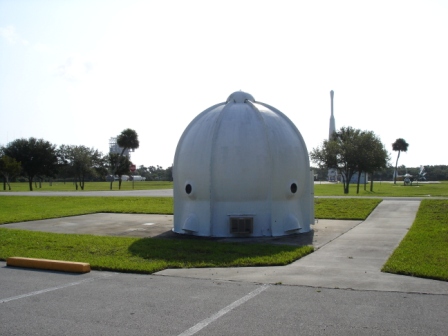
Photo Gallery
Overview
Display location:
History
The display consists of a Meteorological Sounding System (MSS) antenna enclosed in a protective radome.
The S-78G/UM radome is constructed of individual fiberglass segments bolted together to form a complete unit. Entry to the enclosed antenna is through a large access door at the base. Glass viewing ports are visible with shrouded ventilation ports below. A small room air conditioner (visible in the photograph – right) was sufficient to maintain proper temperature and humidity levels inside the radome.
The antenna is a 2.4 meter diameter aluminum parabolic reflector supported by an enclosed elevation-over-azimuth mount using direct-drive torque motors. The antenna fills the inside of the radome with little room to spare.
How It Works
The antenna is a ground component of a larger Meteorological Sounding System. In operation, the antenna transmitted to (uplink) and received data from (downlink) an airborne Radiosonde package suspended beneath a ground-launched weather balloon. The uplink provided ranging data and the downlink provided temperature and humidity readings which were sent to a computer, another part of the MSS, for analysis. An automated tracking system kept the antenna pointed directly at the airborne Radiosonde.
This antenna and radome were once in use at the weather station on Cape Canaveral Space Force Station.
Related Pages:
- CCSFS Weather Balloon Station
- Arcas Archived Photography
- Arcas Launcher
- Loki and Launcher
- Rockets and Weather
- CCSFS Launch Complex 43
- CCSFS Launch Complex 47

